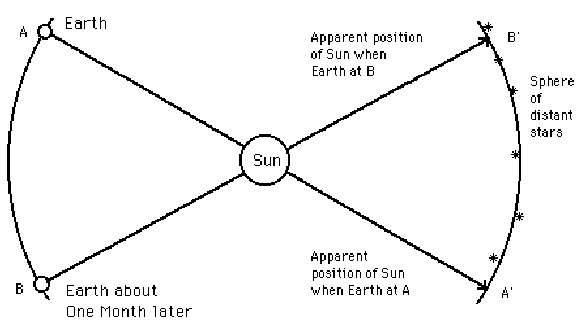
Homework 1
Due: Tuesday, 21 January, 1997
Name: ________________________
Student Number: ______________
(a) The meteorite contains pockets of air from when it was formed.
The composition of the air matches the atmosphere of Mars.
The meteorite contains minerals that are similar to other meteorites
that are believed to come from Mars. (5 points)
(b) URL [many possibilities] (1 point)
2. We have discussed the difference between "observed facts" and scientific models. The statement "We found a rock in Antartica which came from Mars." is a combination of a statement of fact and deduction from a model. Given the information you found in Question 1, rewrite the statement so it is purely a statement of what the scientists found.
A meteorite was found that contains gases that match the composition of the atmosphere of Mars. (1 point)
The plastic globe misrepresents one aspect of the Earth - sky relationship: the actual scale is very different from the impression given by the Globe. The scale of the Globe suggests that the distance from the Earth to the sun and stars is only slightly larger than the Earth itself. In reality, the diameter of the Earth is 12,700 km, the distance to the Sun is 1.5x108 (150,000,000) km, and the distance to the nearest star is 4.0x1013 km or about 300,000 times farther away than the Sun).
The North and South Celestial Poles are extensions of the Earth's north and south poles to the celestial sphere. The Celestial Equator is the extension of the Earth's equator to the celestial sphere. Coordinates on the celestial sphere are similar to latitude (north-south) and longitude (east-west) on Earth. East-West location in the sky is given by right ascension (RA) which is marked along the Celestial Equator. This angle is measured in units of time (hours, minutes, seconds). Since there are 24 hours in a day, during which the Earth spins around 360 degrees, 1 hour = 15 deg. Lines of constant RA, from the Celestial Equator to the Celestial Poles, are given every hour. North-South location in the sky is given by Declination (Dec), the angle, in degrees, north (+) or south (-) from the Celestial Equator, which is marked along the RA 0-hour and 12-hour lines. Lines of constant dec., parallel to the Celestial Equator, are given every 10 deg.
Since the Earth orbits around the Sun once a year, the Sun appears to move with respect to the background stars. This annual motion is in addition to its daily motion caused by the Earth's rotation.

1. Adjust the celestial globe so that the pole star Polaris is at an angular distance above the horizon (the horizontal black plastic band outside of the plastic ball) equal to our latitude, 42 deg N. (The declination line marked 40 deg N should be slightly below the horizon at its lowest point.)
2. Rotate the Earth so Michigan is on top facing straight up.
The celestial globe is now set up to reproduce the sky as seen on Thursday 16 January. It is important as you go through the changes described below to KEEP POLARIS AT THE CORRECT HEIGHT ABOVE THE HORIZON LINE.
3. Rotate the celestial globe, keeping the Sun at 16 January and Polaris at 42 deg above the horizon line, until the Sun is as high above the horizon line as it can go; this is our local noon. Now rotate the celestial globe, again holding the Sun at 16 January and Polaris at 42 deg above the horizon, until the Sun is level with the horizon ring in the west; the globe now represents the position of the sky at sunset. Adjust the Earth so Michigan is again at the top facing straight up.
(a) Name one of the constellations which would be overhead.
Andromeda [Also possible: Lacerta] (1 point)
(b) Where in the sky would you see the star Arcturus? (This star is interesting as it is similar to how the Sun will be 5 billion years from now.)
Arcturs is not visible (it is below the horizon). (1 point)
(c) Could you see our companion spiral galaxy, M31, in the constellation Andromeda?
Yes. [It is nearly overhead.] (1 point)
4. Now rotate the celestial globe, keeping the Sun at 16 January, Polaris at 42 deg above the horizon line, and the Earth with Michigan on top, until the Sun is as far below the horizon line as it can go (opposite its noon position); this is local midnight.
(a) Where would the star Arcturus appear to be now?
In the EAST [just above the horizon]. (1 point)
(b) Could you see the galaxy M31, Andromeda?
Yes [in the northwest]. (1 point)
5. Use the Celestial Globe to find (a) the Right Ascension (RA), declination
(Dec) and constellation of the star Antares. Give your answer accurate to 30
min in RA and 5 deg in Dec.
Right Ascension Declination Constellation
15 hours 30 min -25o or 25o S Scorpius
+- 30 min +- 5o
(1 point) (1 point) (1 point)
(b) On what date will the Sun be on the opposite side of the Earth from Antares?
May 25 [ +- 15 days] (1 point)